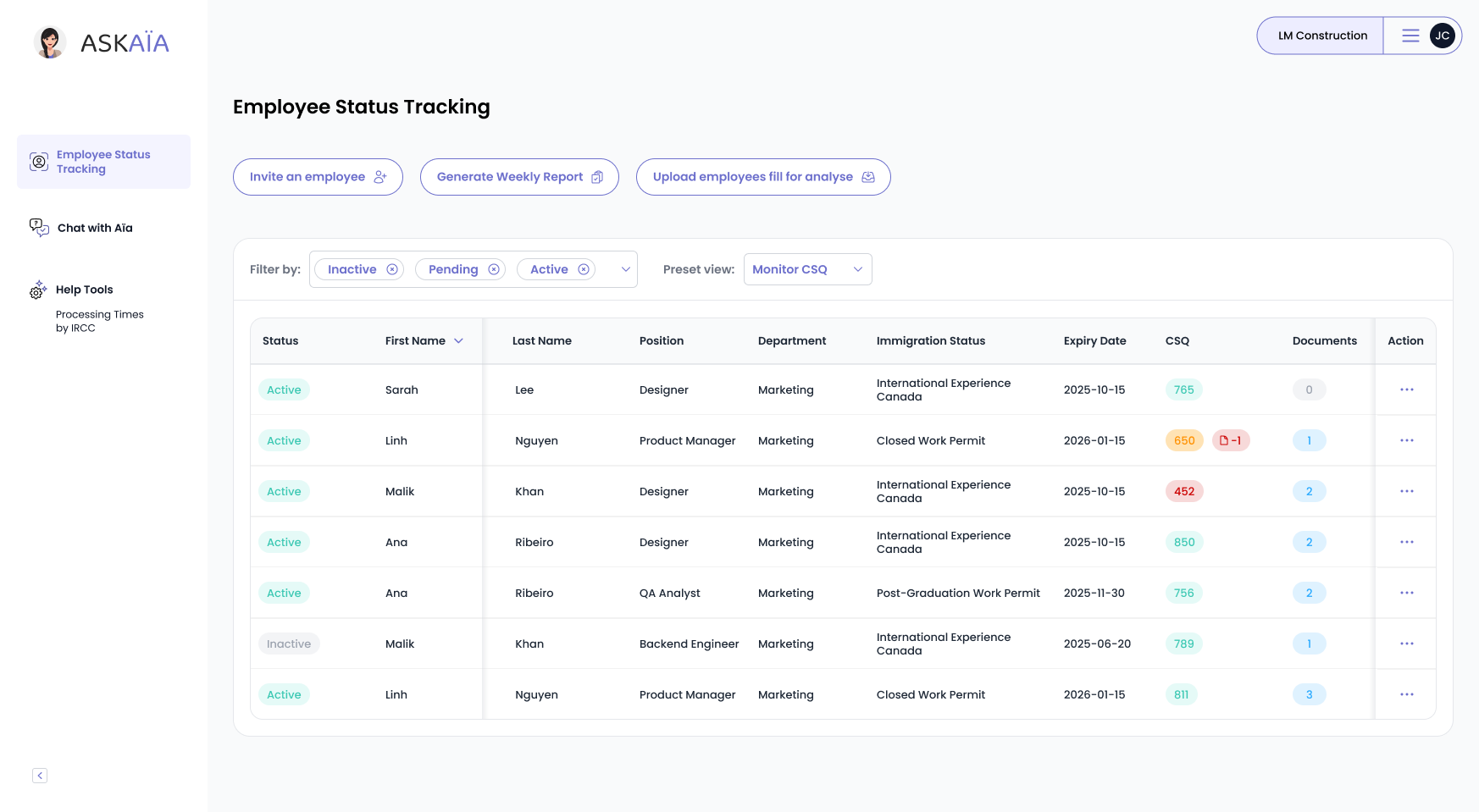Getting an LMIA approved is a win, but it’s not the finish line. For HR teams, the true compliance challenge begins after the foreign worker is hired. As of 2025, penalties for post-approval violations have doubled, and Service Canada is expanding audits on employers years after the LMIA decision.
In this article, we explain what your company must do after receiving a positive LMIA, what to document, how long to keep it, and what triggers inspections.
What you will find in this article
- LMIA Approval Is Just the Start
- Post-LMIA Employer Obligations
- The 6-Year Rule: What You Must Keep on File
- What Triggers a Compliance Audit?
- Penalties and Public Exposure
- Common HR Gaps in LMIA Compliance
- How to Stay Audit-Ready
- Quick Checklist: Is Your LMIA File Audit-Ready?
- LMIA Compliance Is a Long Game
LMIA Approval Is Just the Start
Once your LMIA is approved and your foreign hire starts working, your obligations as an employer shift into long-term compliance mode.
Service Canada may conduct random or targeted inspections at any time in the 6 years following employment. If you can’t provide proof of compliance, you risk:
- Fines of up to $100,000 per violation
- Temporary or permanent bans from the LMIA program
- Public listing as a non-compliant employer
Post-LMIA Employer Obligations
You must ensure the worker:
- Is paid the wage stated in your LMIA
- Performs the duties listed in the application
- Works the hours and schedule promised
- Receives benefits and housing (if applicable) as stated
- Is not moved between locations or roles without prior authorization
The 6-Year Rule: What You Must Keep on File
By law, employers must retain all records for 6 years from the first day of employment. This includes:
- LMIA decision letter & application package
- Employment contract & signed offer
- Time sheets & schedules
- Wage payment records (pay stubs, bank proof)
- Tax remittances & T4s
- Proof of benefits or housing (if applicable)
- Recruitment records and job postings
Service Canada may request these at any time, even years after the worker has left.
What Triggers a Compliance Audit?
Your company may be selected for inspection if:
- The worker files a complaint
- You apply for multiple LMIAs in the same role
- You're in a high-risk sector (e.g., retail, construction, agriculture)
- Your file has inconsistencies (e.g., salary below market rate)
Penalties and Public Exposure
The consequences of non-compliance are serious and long-lasting:
| Violation | Potential Penalty |
| Underpaying wages | Up to $100,000 fine + repayment |
| Missing records (e.g. hours worked) | Monetary penalty + audit flag for future LMIAs |
| Changing job duties without notice | Program suspension for up to 5 years |
| Repeated violations | Permanent ban + public blacklisting on Canada.ca |
Once listed publicly, it becomes harder to hire foreign workers, even in other programs.
Common HR Gaps in LMIA Compliance
Even well-organized HR departments often fall short in areas like:
- Fragmented file storage across different systems or folders
- Staff turnover, leading to undocumented processes or missing case knowledge
- Inconsistent record retention between payroll, HR, and operations
- Untracked changes in roles, wages, or job locations during the worker’s stay
Tip: Use a shared compliance checklist across your HRIS, payroll, and immigration teams to stay aligned.
How to Stay Audit-Ready
HR teams should:
- Use centralized HR systems to store LMIA files
- Conduct internal compliance audits annually
- Keep payroll, time-tracking, and job descriptions synced
- Work with immigration advisors to update LMIAs when changes occur
Quick Checklist: Is Your LMIA File Audit-Ready?
- Job ads and recruitment proof saved with timestamps
- Contract and duties match the LMIA application
- Wage, hours, and schedule records are up to date
- Changes in location or role are reflected in permits
- Payroll and tax records are accessible and synced
- All documentation retained for 6 years by employee name
LMIA Compliance Is a Long Game
Your responsibility doesn’t end when the LMIA is approved, it continues for 6 years. The best way to stay safe is to treat LMIA compliance like a long-term legal obligation, not just an immigration step.
Not sure if your file would pass an audit? Book a free consultation with our team to plan your next hire.

Let’s get your demo started
Book a demo
You May Also Like
These Related Stories

LMIA File Prep 2025: Documents, Proof & Transition Plans Explained
Posting the job is only half the LMIA battle. For HR teams, most rejections happen when the file is incomplete: missing documents, vague transition pl …

LMIA Streams 2025: Pick High-Wage, Low-Wage, or GTS Fast
Canada’s LMIA system now operates at two speeds: eight-day approvals for Global Talent Stream roles and months-long queues or outright freezes for man …

LMIA: Can you get a work permit? All Your Questions Answered
Many newcomers struggle with securing a job in Canada due to Labour Market Impact Assessment (LMIA) complexities. Who qualifies? How do you apply? Wha …


